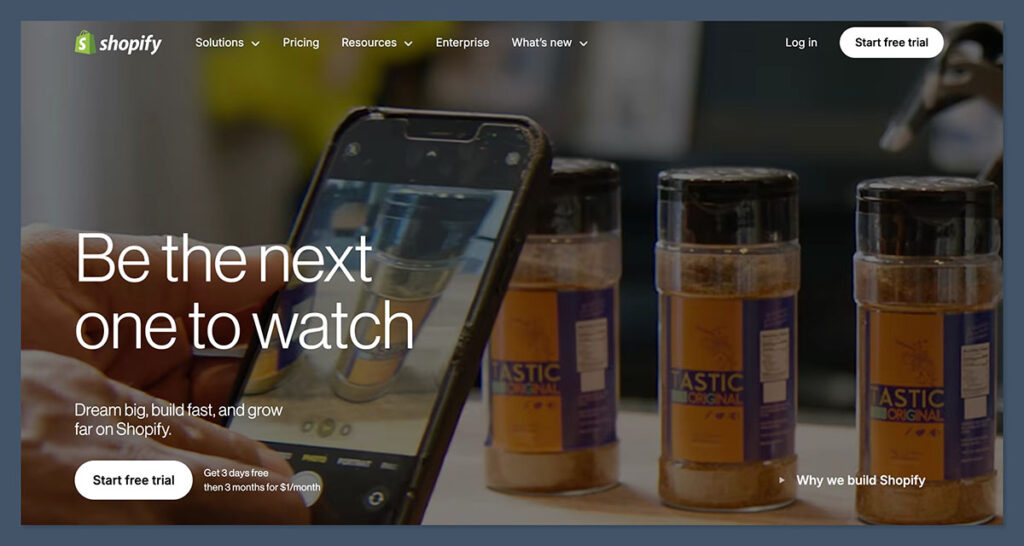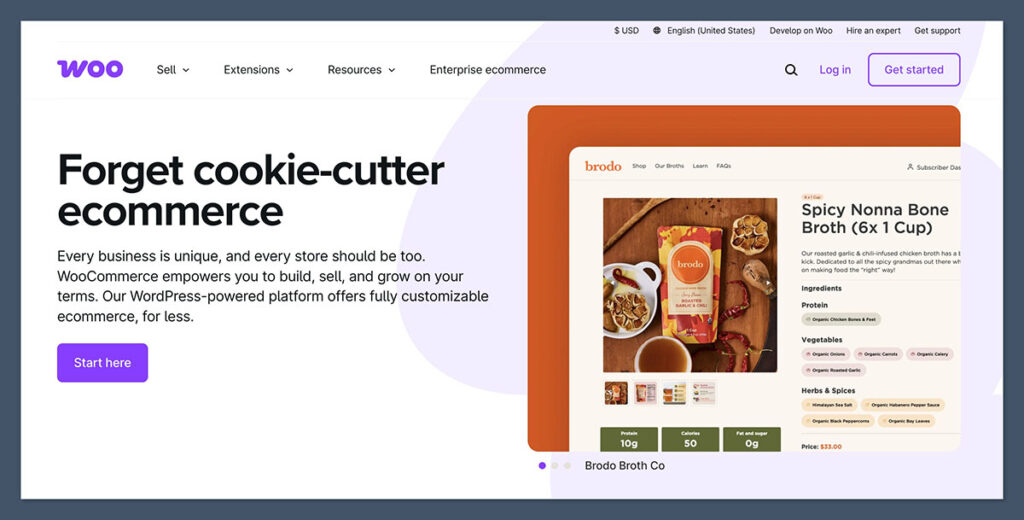Disclosure: We may earn a commission or fee from some of the links in our content. However, this does not affect our recommendations. Learn more.
If you’re weighing whether Shopify is actually worth the monthly cost—or if you’d be better off using something like WooCommerce, Wix, or BigCommerce—this breakdown will help you get clear, fast.
After more than a decade working with eCommerce platforms in the dropshipping and print-on-demand space, I’ve seen how the choice of platform can make or break everything from daily operations to long-term growth.
Over the years, I’ve helped guide agencies, developers, and store owners through these exact decisions—so this guide comes straight from real-world experience.
We’re going to walk through what actually matters when picking your platform: ease of use, POD integrations, pricing, scalability, SEO, and how each option holds up as your business grows.
1. Ease of Use: How Simple Is It to Launch and Run a Store?
If you’re starting from scratch or just looking to avoid headaches, the platform’s ease of use is one of the most important factors.
Shopify

Shopify is designed to get you live fast. Everything’s centralized in one clean dashboard, with hosting, security, and the storefront handled for you.
That’s a big deal when you’re just trying to focus on launching products and making sales.
What works well:
- Drag-and-drop editor with mobile-friendly themes
- Built-in checkout, shipping, and tax setup
- Direct integration with Printful, Printify, and other POD apps
- Easy app installs with one-click integrations
Even for someone without technical experience, it’s realistic to build a store and launch products the same day.
If something breaks, there’s plenty of documentation and support to help you troubleshoot.
WooCommerce

WooCommerce gives you more control, but it comes with more setup and responsibility.
It’s a WordPress plugin, so you’re in charge of things like hosting, backups, and site speed.
What to expect:
- Flexibility in design, functionality, and SEO
- Hosting required (typically $10–$30/month)
- Needs plugin installs for basic features like shipping and tax
- More technical overhead, especially as you grow
It’s great for people who enjoy customizing their setup or need specific features that Shopify doesn’t offer.
But if you’re looking for a plug-and-play experience, WooCommerce can feel overwhelming.
Wix, Squarespace, BigCommerce

These options are in the middle.
They’re easier than WooCommerce and less complex than Shopify—but that simplicity can become a limitation later.
Quick breakdown:
- Easy setup and clean design editors
- Fewer tools and app integrations for POD
- Basic ecommerce features, not optimized for scale
- Best for creators or smaller catalogs
If your goal is to run a side project or creative shop with a small product range, Wix or Squarespace might be enough.
But for print-on-demand brands aiming to grow or automate, Shopify is in a different league.
2. Print-on-Demand Integrations and Automation
Print-on-demand lives and dies by integration quality.
If your POD platform and store don’t sync properly, you’re going to lose orders, time, and probably your sanity.
Shopify
Shopify dominates here. Almost every serious POD provider prioritizes their Shopify integration, and the automation is impressive.
Top integrations include:
- Printful
- Printify
- Gelato
- SPOD
- Gooten
- Apliiq
- Fuel
Once integrated, these apps let you:
- Push products to your storefront in one click
- Sync orders automatically, including tracking info
- Manage variants, pricing, and mockups without touching code
- Route orders by location for faster fulfillment
You also get access to automation tools for upsells, abandoned cart recovery, shipping calculators, and even multi-supplier routing.
WooCommerce
WooCommerce supports many of the same POD platforms, but the integrations tend to require more setup—and occasional maintenance.
What works:
- Integrates with Printful, Printify, Gelato, and more
- Flexible with plugins, APIs, and custom dev work
- Full control over order flows and customizations
Where it falls short:
- Plugin updates can cause conflicts
- You’ll likely need to manage backups, cache, and security yourself
- Automation is less intuitive and often fragmented
For someone technical or with dev resources, WooCommerce is capable.
But for most store owners, Shopify delivers a smoother experience.
Wix, Squarespace, BigCommerce
These platforms support some POD tools, but the depth of automation isn’t on the same level.
- Wix integrates with Printful and Printify, but often lacks advanced features
- Squarespace has minimal POD support and limited fulfillment automation
- BigCommerce works with Printful, but has fewer options overall
They’re functional for testing a concept but not ideal for high-volume or high-touch operations.
3. Pricing: What Are the Real Costs of Running a Store?
You’ve got monthly fees, transaction fees, app charges, and other tools to think about.
Let’s simplify the math.
| Platform | Monthly Cost | Transaction Fees | Plugin/App Costs |
|---|---|---|---|
| Shopify | $39 to $399/month | 2.0% unless using Shopify Payments | Most good apps are paid |
| WooCommerce | Free (WordPress plugin), hosting $10–$30/month | None (only payment gateway fees) | Some free, many paid |
| BigCommerce | $39 to $399/month | No platform fee, gateway only | Limited app selection |
| Wix | $27 to $59/month | 2.9% + 30¢ per transaction | Basic tools included |
| Squarespace | $33 to $65/month | 3% on lower-tier plans | Few POD integrations available |
What you’re really paying for with Shopify is speed and automation.
The monthly cost covers a system that just works—hosting, updates, backups, and integrations are taken care of.
With WooCommerce, you might save on platform fees, but costs can creep up through hosting, plugin renewals, or dev work if something breaks.
If you’re running a low-volume store and want to save money, WooCommerce could be the leaner option.
But if time and clean systems matter more, Shopify’s monthly fee is usually worth it.
4. Scalability and SEO: Can It Grow With You?
As your brand grows, you need systems that don’t collapse under pressure—or slow you down when you’re trying to optimize for search.
Shopify
Shopify is built to scale.
Whether it’s traffic, inventory, or automation, it handles growth without needing to rebuild your infrastructure.
Strengths:
- Fast, secure hosting with no performance maintenance required
- Scales easily with apps for upsells, CRM, and warehousing
- App ecosystem supports scaling into wholesale, subscriptions, and international markets
SEO caveats:
- URL structure is fixed (
/products/,/collections/) - Limited control over technical SEO (like redirects or meta templates)
You can still build traffic and content, especially with apps like Bloggle or using Shogun for landing pages, but Shopify isn’t built for content-first businesses.
WooCommerce
This is where WooCommerce stands out. It’s built on WordPress, which is still the best platform for long-form content and SEO.
Strengths:
- Full control over URLs, metadata, tags, schema, and internal linking
- Ideal for content-heavy brands or niche SEO strategies
- Can scale technically—but only with proper hosting and maintenance
Challenges:
- High traffic requires caching, a CDN, and a solid server setup
- Regular maintenance and plugin updates are essential
For brands that rely on blogging, content marketing, or organic traffic, WooCommerce has the edge.
Just be prepared to manage more of the backend.
Wix, Squarespace, BigCommerce
These platforms can handle moderate growth, but tend to max out faster.
- SEO features are basic or paywalled
- Scaling product catalogs and workflows is harder
- Fewer tools for advanced automation or funnel building
Good enough for side businesses, not recommended for scaling into six or seven figures.
5. Support and Community: What Happens When You Need Help?
Eventually, something breaks, doesn’t work as expected, or confuses the hell out of you.
The quality of support and documentation really starts to matter.
Shopify
Shopify has 24/7 support via live chat and email, plus a massive help center and ecosystem.
Perks:
- Huge global community of developers, experts, and tutorials
- Shopify subreddit and YouTube tutorials are active and detailed
- Most apps also offer Shopify-specific support
Whether you’re solving a billing issue, app bug, or theme problem, support is usually fast and knowledgeable.
WooCommerce
Support depends on where you got your plugins, theme, and hosting.
Pros:
- Massive community and open-source support culture
- Easy to find freelance developers and troubleshoot via Stack Overflow
Cons:
- No central support—each plugin or service has its own team
- DIY troubleshooting can take longer
If you’re comfortable with forums, documentation, and occasional trial and error, WooCommerce gives you a lot of freedom.
But if you want quick, centralized answers, Shopify is easier to work with.
Final Thoughts: Which Platform Is Best for You?
Every store has different needs, so there’s no one-size-fits-all answer. But here’s how I usually help people decide:
| Scenario | Best Platform |
|---|---|
| Want to launch fast with minimal tech | Shopify |
| Focused on print-on-demand and scaling | Shopify |
| Need advanced SEO and content marketing | WooCommerce |
| Tight budget, willing to DIY | WooCommerce |
| Selling small collections creatively | Wix or Squarespace |
| Building on marketplace traffic only | Etsy, Redbubble, etc. |
If automation, speed, and a clear support path matter, go with Shopify. You’ll pay a little more, but it’s predictable and smooth.
If you’re building a niche content brand, have experience with WordPress, or want total control, WooCommerce can give you what you need—just expect to put in more time behind the scenes.
Wix, Squarespace, and BigCommerce can work for simpler shops or niche projects, but they’re not built for serious POD or dropshipping growth.

